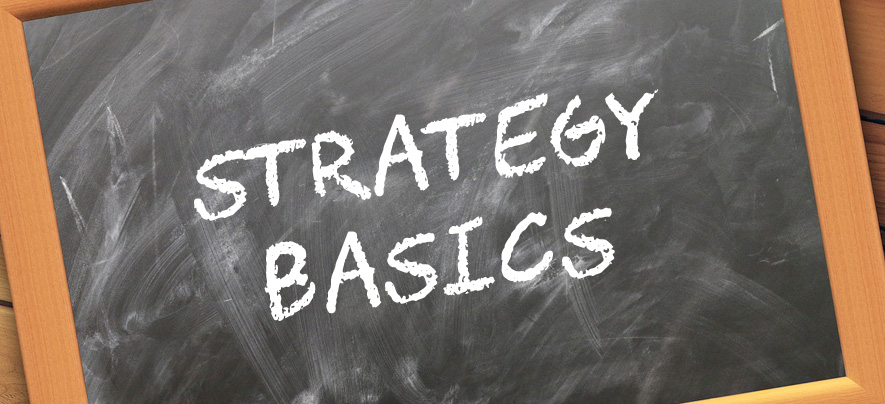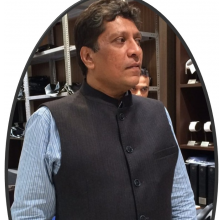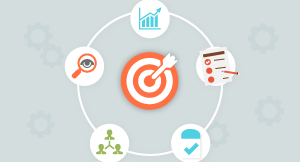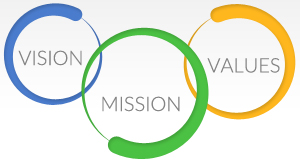The Strategy Process: A Brief Recap of the Basics for Company & Team Leaders

Business Development
514 week ago — 7 min read
Strategy means different things to different people. Some would call it a plan. Others would refer to it as a system to counter a competitor. Yet some others would see it as a game plan.
First and foremost, strategy is not an event – it is a process that leads to an event. Moreover, strategy is a formal process. And strategy depends on the frame of reference – the company itself, the environment, the moment or the situation, the competitors, the pricing and a whole host of variables.
Strategy therefore has three important components:
- Content
- Context
- Process
One must remember that the strategy that you started with need not be the one you executed – because during the execution itself, some of the variables would have changed. Therefore, there are three possibilities:
- Envisaged Strategy - What You Planned
- Implemented Strategy - What Actually Happens
- Retrospective Strategy - What Should Have Happened
A good strategy, as mentioned earlier is a process.
It starts with:
- Understanding the situation
- Evaluating alternative courses of action
- Choosing a course of action and acting on it
If you observe a chess player, you will see the player visibly going through these three motions. Little wonder that the chessboard (with some chess pieces thrown in) has become synonymous with strategy.
“No deliberation made by a single person will be successful; the nature of the work which a sovereign has to do is to be inferred from the consideration of both the visible and invisible causes.” - Chanakya
A strategic decision might be taken by one person, but it is the result of the direct or indirect involvement of many.
Some important factors in strategy
- Arenas – Where will we be active? – This really refers to what business we will pursue. Obviously, this depends largely on your core competence and to a certain extent on the market attractiveness. This further boils down to the product categories and the market segments that you would like to cater to. You would also consider the geographic areas or locations you would consider catering to, based on their accessibility, attractiveness, lifestyle etc. A virgin market may be very attractive to some companies while many others in the same category might find it a challenge. You would also look at the core technologies that you would cater to.
- Vehicles – How will we get there? – This would take into consideration factors such as the people required, budgets required and also the technologies and infrastructure required. You would look at partnerships and alliances – and what synergies you could get from such alliances. This is the stage where you also look at franchising and other distribution vehicles. You look for strategic alliances and potential partners.
- Differentiators – How will we win in the marketplace over competitors? – Here you will look at the differentiators such as pricing and the brand itself. You will look at how you would like to package yourself as a company and as a product or service. Pricing considerations would be governed by affordability, competitor pricing and image perceptions. You may want to position yourself as exclusive or reasonable. You could look at positioning yourself as affordable. Micromax, for example, has positioned itself as an affordable brand. You would also look at product reliability. Do you want to be seen as a robust, never die, product that will survive a thousand knocks, or would you rather position yourself as a quick agile product that launches fast but with a shelf life that will outlast the technology but not the industry?
- Staging – What will be our sequence of moves? – Here you would look at the sequence of initiatives, and the various stages of products. This is governed to a great extent by the available resources and also by your current status. You may consider launching a variant soon after the launch of a product. This is a planned sequence. A car manufacturer may come out with a vehicle while simultaneously planning to launch a luxury variant in the same family of brands within a couple of years. Staging also looks at the timing of the launch and likely competitor and consumer activity around that time. Staging would depend on the environment, competitors, seasons etc. For example, a waterproofing company would plan all its activities around the monsoon. They would also look at pre-monsoon build up and post monsoon R&D. Many consumer companies would look at event-based staging. Cricket fever, for instance, is a favourite for certain tobacco companies. Staging also looks at the speed of deployment. Some companies would deliberately use a wait and watch approach, others would deploy fast, relying on course corrections. Microsoft is an example.
- Economic Logic – How much and how will we get returns? – All the decisions above govern and are governed by economic logic. Would you want to achieve economies of scale or would you rather go small but use replication as a simple route to save cost? Replication would mean that you minimise R&D cost, and do not reinvent the wheel. It also implies a quicker go to market and therefore cost saving. Standardisation is also a consideration – Sony Vaio laptops for instance may maintain a differentiation in terms of their laptop adapters but this also adds to cost as they are one of the few using that size. Would you want to give exemplary service that implies higher costs or would you rather invest in advertising that creates the same price perception. Above all, you would look at what impact on revenue you would have with reference to each of these decisions.
Criteria to Evaluate Your Strategy
Based on all these decisions, you would create a strategy. Some of the criteria by which you would evaluate your strategy would include
- Overall fit with the environment
- Use of key resources
- Core competence
- Sustainability and impact of the differentiators
- Consistency with your internal forces
- Availability of resources
- Robustness and implement-ability of the strategy itself
You must remember that strategy isn’t a static phenomenon. As mentioned earlier, it is a process and a continuously evolving process at that. The stages remain, but what changes are the decisions taken in these stages based on changes in the factors.
Understanding and appreciating the basic process can give you the edge in hours of decision-making. Since you know the process, the variables and where they fit churn through the system much faster and you arrive at a decision much faster too.
Posted by
Ajoy VakilYour Virtual Chief Marketing Officer DirectMart offers a host of S.MAR.T services (Strategy, Marketing and Training) that help you reach where you want to go! We help you in...
Network with SMEs mentioned in this article
View Ajoy 's profile
Other articles written by Ajoy Vakil
Your Company’s Values Can Raise Your Company’s Value
514 week ago
Most read this week
Trending
Get Efficient at Taking Decisions
Lãnh đạo & Quản lý 24 week ago
The Art & Science of People Pleasing in Retail
Bán lẻ 27 week ago
Khởi nghiệp 27 week ago
















Comments (1)
Share this content
Please login or Register to join the discussion